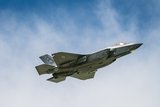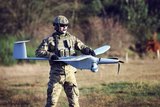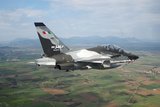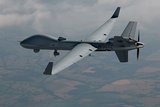Northrop Grumman and Raytheon complete missile interceptor review
The Northrop Grumman and Raytheon team complete a major milestone to advance the US Next Generation Interceptor program. (Image: Northrop Grumman)
The Northrop Grumman and Raytheon Technologies Next Generation Interceptor (NGI) team has completed its Systems Requirements Review (SRR) for the US Homeland Defense Interceptor program.
The aim of the program is to protect the US against intercontinental ballistic missile threats in the 2030s.
With the review finished, the team moves on to start initial system design, further risk reduction testing and critical component qualification activities.
The Missile Defense Agency approved the SRR after the team demonstrated its NGI Common Software Factory, which enables rapid deployment, integration and delivery in a DevSecOps environment.
Northrop Grumman and Raytheon Technologies are leveraging high-fidelity model-based system engineering and hardware manufacturing in customer-certified facilities.
The team is also conducting internally funded risk reduction hardware development and testing to support the rapid deployment of NGI.
Scott Lehr, VP and general manager, launch and missile defense system, Northrop Grumman, stated: ‘We’re leveraging our two decades on performance on the current Ground-Based Interceptor’.
VP of Strategic Missile Defense, Raytheon Missile & Defense, Tay Fitzgerald outlined the experience Raytheon brings to the team ‘with 47 successful exo-atmospheric intercepts achieved to date’.
The companies initially received the contract to develop the NGI last year, in May 2020.
More from Air Warfare
-
![Portugal signals interest in establishing A-29N final assembly line]()
Portugal signals interest in establishing A-29N final assembly line
As the launch customer for the NATO-configured variant, Portugal also took delivery of the first five A-29N aircraft from its order for 12, placed in 2024.
-
![Leonardo signs contract on Austria’s M-346 aircraft order]()
Leonardo signs contract on Austria’s M-346 aircraft order
The first of the 12 M-346 aircraft are expected to be delivered to the Austrian Air Force by 2028, according to the company.
-
![2025 UAV market review: $7.8 billion in new contracts signed as US leads spending]()
2025 UAV market review: $7.8 billion in new contracts signed as US leads spending
Qatar and Indonesia followed the US’s high spending on new uncrewed aerial vehicle contracts across 2025, while MALE and micro drones and loitering munitions were particularly popular subcategories this year.






















